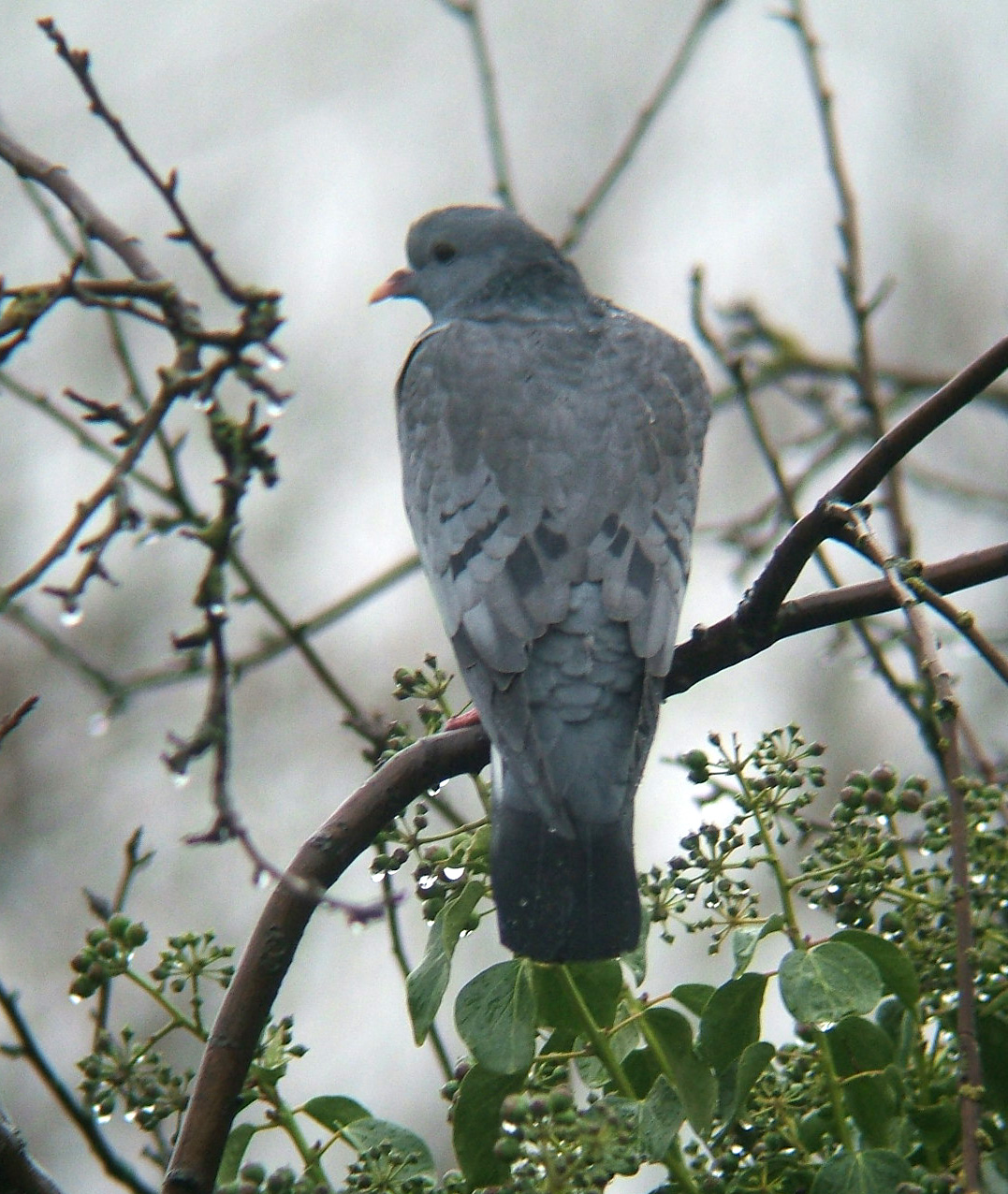- Stock Pigeon
Taxobox
name = Stock Pigeon
status = LC | status_system = IUCN3.1

image_width = 200px
regnum =Animal ia
phylum = Chordata
classis = Aves
ordo =Columbiformes
familia = Columbidae
genus = "Columba"
species = "C. oenas"
binomial = "Columba oenas"
binomial_authority = Linnaeus, 1758The Stock Pigeon or Stock Dove ("Columba oenas") is a member of the family Columbidae,
dove s and pigeons.In the northern part of its
Europe an and westernAsia tic range the Stock Pigeon is a migrant, elsewhere it is a well distributed and often plentiful resident.The three western European "Columba" pigeons, though superficially alike, have very distinctive characters. The
Wood Pigeon may at once be told by the white on its neck (in adults) and wings. TheRock Pigeon and Stock Pigeon are more alike in size and plumage, but wild specimens of the former have a white rump and two well-marked dark bars on the wing, while the rump of the Stock Pigeon is grey and its wing bars incomplete.Feral pigeon (the same species asRock Pigeon ) is highly variable, and indistinctly marked grey specimens with the white rump missing can sometimes resemble the Stock Pigeon quite closely.The haunts of the Stock Pigeon are in more or less open country, for though it often nests in trees it prefers parklands to thick woods. It is also common on coasts where the cliffs provide holes. Its flight is quick, performed by regular beats, with an occasional sharp flick of the wings, characteristic of pigeons in general.
It perches well, and in nuptial display walks along a horizontal branch with swelled neck, lowered wings, and fanned tail. During the circling spring flight the wings are smartly cracked like a whip.
The Stock Pigeon is sociable as well as gregarious, often consorting with Wood Pigeons, though doubtless it is the presence of food which brings them together.
Most of its food is vegetable; young shoots and seedlings are favoured, and it will take grain.
The short, deep, "grunting" "Ooo-uu-ooh" call is quite distinct from the modulated cooing notes of the Wood Pigeon; it is loud enough to be described, somewhat fancifully, as "roaring".
The nest (though nesting material is seldom used) is usually in a hole in a tree, a crack in a rock face, or in a
rabbit burrow, but the bird also nests in ivy, or in the thick growth round the boles of common lime (linden) trees. It will also usenest box es.References
* Database entry includes justification for why this species is of least concern
External links
* [http://www.ibercajalav.net/img/260_StockDoveCoenas.pdf Ageing and sexing (PDF) by Javier Blasco-Zumeta]
Wikimedia Foundation. 2010.
